A Tribute to the Patron Goddess of the Sea (Chua Ba Thien Hau)
By Christina Kim - November 01, 2015
Would you learn the secrets of the sea? Only those who braves its dangers, comprehend its mystery
- Henry Wadsworth Longfellow-
All seafarers know this fact very well; the very idea of going to the sea is itself a risk.
It is a risk they have faced every single day.
But, what is life without that little risk?
Are seafarers the only one who faces risks every day, and only at the sea?
No, that is simply not the case.
Everyone is facing risks and the potentials of danger every single day.
There is no running away from it anywhere you go, or whatever it is you do.
If you think sitting at home is safe, think again.
That is what life is all about.
There is always that risk.
Does it make us stop living?
Life goes on.
Like the rest of us, the seafarers know this very well.
They continue to go to the sea, because that is simply, where they belong.
The sea, while mysterious and dangerous, to all of us, is home to these seafarers.
Mariners, sailors, fishermen, and anyone who has lived and worked at the sea will attest to that fact.
They love the sea, with all its dangers and mysteries.
After all, there is nowhere without a storm.
Even if it is calm.
Some of their faiths are founded based on their love for the sea, for life, and for those whom they loved.
Perhaps it is also for the greater purpose and that calling they have in life.
Some, may even find that strength in the foundation of religion.
The belief that there is that protector, that figure of the patron who watches over them.
A Goddess, perhaps?

Goddess of the Sea, or the Patron for the seafarers; Thien Hau (literally translates to mean Heavenly Empress) is one such known figure.
Popularly worshipped especially among the Chinese community; from where she originated, since the period of the Song Dynasty, this Patron Goddess of the Sea is the deity believed to protect the seafarers, watching over them and keeping them safe from the dangers of the sea.
She is particularly popular especially in China; especially in coastal region areas such as Zhejiang, Fujian, Guangdong, Tianjin and Hainan, and also in Taiwan and various parts of Southeast Asia (Malaysia, Singapore, Vietnam).
Due to the foundations and beliefs surrounding her powers, it is not uncommon that she is more often worshipped and popularized on the coastal areas or in regions within close proximity to the sea, where the local population are usually involved in occupations closely related to the sea.
It is the Chinese beliefs and it is also unique to note that Thien Hau was not in fact, specifically, pointed to originate from either the Taoism or the Buddhism stream.
It could even be, a cross between both religious beliefs on the roots of this protective figure.
The Legend of Thien Hau
According to the legends, Thien Hau was originally of human origins herself; a girl who was born in the year 960, in Meizhou (湄州), a place located in the Putian County(莆田縣) of the Fujian Province in China.
This was during the period of the rule of the Song Dynasty in China.
She was named Lin Moniang (林默娘).
When she was born, she did not cry at all, hence earning her the nickname of the "Silent Girl" since she was young.
She was born to a family of fishermen; with both her father and her brother making a living at the sea.
As such, her life was constantly depicted and associated with the sea.
She would often wait for her father and brother at the shores for them to return from their fishing trip.
She loves to wear red; in fact, she would often put on red garments to stand on the shore - using the bright color to guide the seafarers to the safety of the shores.
She learnt swimming at a rather late age of 15, but she was known as a fearless and outstanding swimmer.
There were many versions surrounding her; of her visions of her father and brother which occurred during a typhoon in her village whereby the villagers feared for those who were out at the sea; including that of her own brother and father.
Then there are also versions speculating her death and how she ascended into heaven and rose as one of the deities, to become the Goddess of the Sea today.
She died in the year 987, at the age of 27.
She was since commemorated and regarded as one of the respected figures in the Chinese religious beliefs, and is believed to reign over the sea.
Many even believe in her powers to travel over and across the sea; often depicted on clouds or even mats, where she would reach out to rescue fishermen or seafarers who are stuck/stranded at the sea.
There are even legends and stories which tell of eyewitness accounts on miraculous survivals and the descending of Thien Hau to save the fishermen/seafarers from danger while at the sea.
It is perhaps this which rooted the Chinese community's faith in the powers of the Goddess.
She is also fondly known as Mazu (媽祖), or endearingly referred to as Mazupo (媽祖婆); literally meaning Grandmother Mazu to most of the local communities.
Perhaps it was a dear and affectionate way of salutation, as she was viewed by the Chinese communities; although she died at a tender age in her late twenties.
Tributes to this affectionate godly figure who watches over the sea, are practiced everywhere.
This usually means the establishment of temples and pagodas in her honor.
It is no surprise that the Vietnamese, with one of the beliefs populating from the Chinese origins (and their population), alongside their close geographical proximity to the sea would be left out of the Thien Hau group of worshippers.
Chua Ba Thien Hau in Ho Chi Minh City (Saigon)
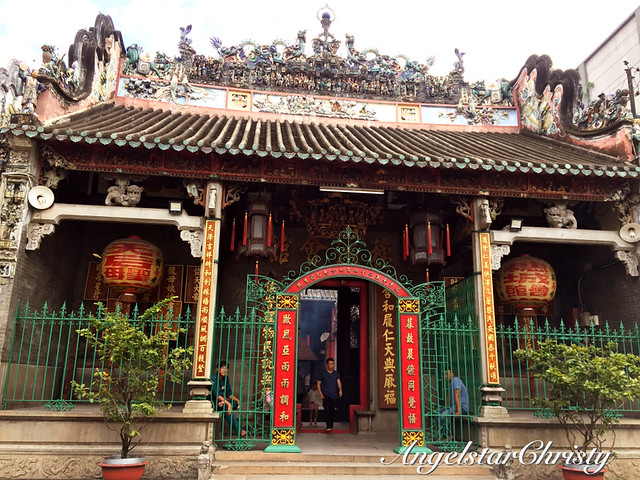
Chua Ba Thien Hau (The Pagoda of Thien Hau), or the Thien Hau Temple is located in the district of Cholon itself; District 5 of Ho Chi Minh City (Saigon).
This is not the only temple in the city; but is one of the most recognized landmarks definitely, especially when it is located in the Chinatown district of HCMC which is the heart of the Chinese population.
Worshippers flock to this temple to pay their respects to the Goddess Thien Hau, and while Cholon is not exactly a community of seafarers (maybe in the past, during the trading era), it does not stop the local devout Chinese believers from their faith in the Patron of the Sea.
From the outside, the temple looks old and like it has seen much better days earlier, but it is that rustic exterior which leads to the revelation of the much visited/frequented site.
Many intricately carved statues; or dioramas decorate the roofs of the old temple; as can be seen on the outside and on top of the temple.
They depict the popularized heroic figures and warriors, and even traders from the 19th century.
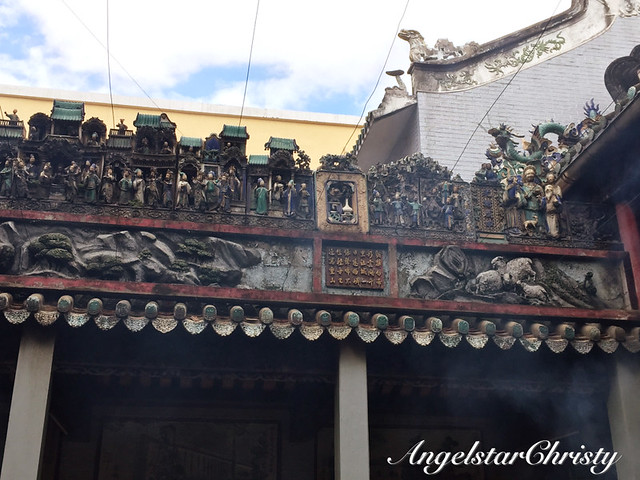
That was when the temple or the pagoda was built; in the 1760, and have undergone various restorations over time, particularly in the early to late 19th century.
Most of the building materials were brought directly from China.
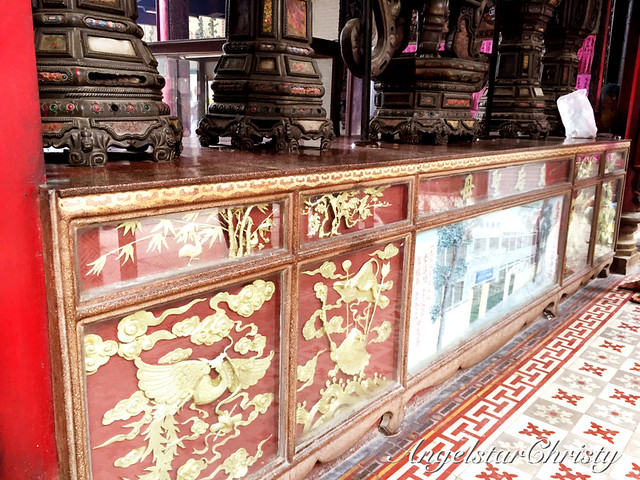
The temple was a tribute to the Goddess Thien Hau, by the local population; who have migrated from the mainland China to Vietnam via the sea route in which they believed they were protected by the Patron Goddess of the Sea to reach in safety.
The pagoda or the temple, was then erected, as a sign, of their heartfelt gratitude for her godly protection.

From the small courtyard on the outside of the temple, a quick glimpse of the temple as one stands on the cobblestone pavement reveals much about the familiar influences of the Chinese architectural designs seen on the main door, the entrance, carved statues, the arched and tiled roofs and of course, the unmistakably sight of the big Chinese lantern hanging outside.
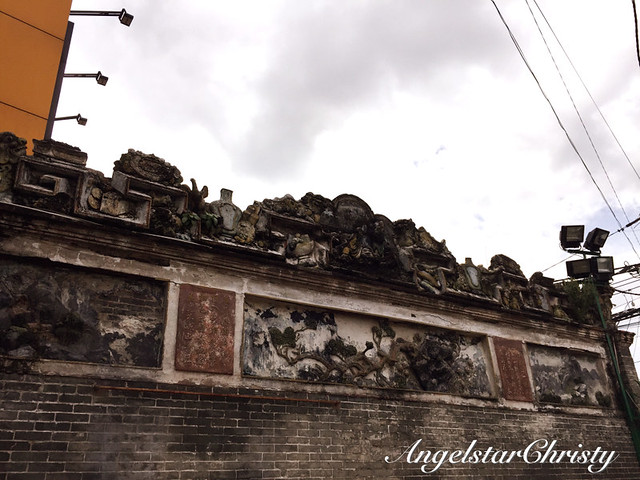

Stepping into the inner courtyard reveals the usual sight of a Chinese temple.
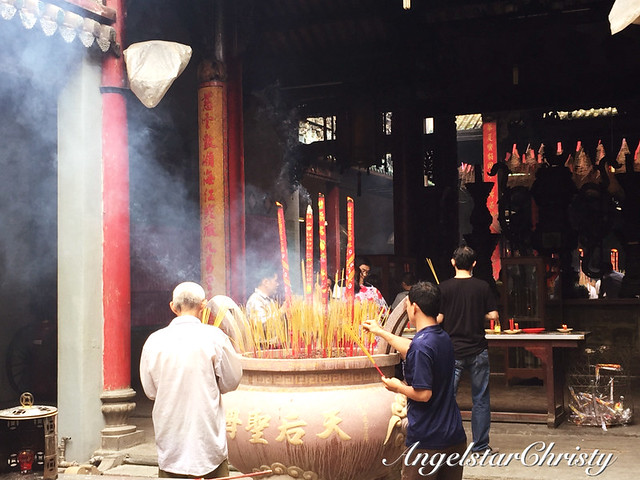
Arising smoke from the burning joss sticks, held by the devout believers as they bustle around the temple, lighting from the candles and stand in solemnity to say their prayers in silence.
It is certainly a popular place of worship, and a strong sign of the rooted beliefs in religion among the local population.
(The Vietnamese are devoted people when it comes to religion, and the country is segregated into many sects of religious beliefs, just like many other countries around the world).
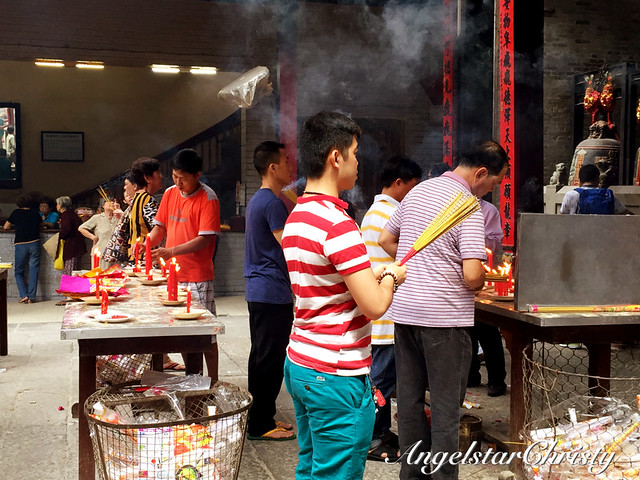


Prayers are conveyed through the burning joss sticks which they hold in their hands as they pray, then stuck into the huge bronze ash bowls standing in front of the altars.

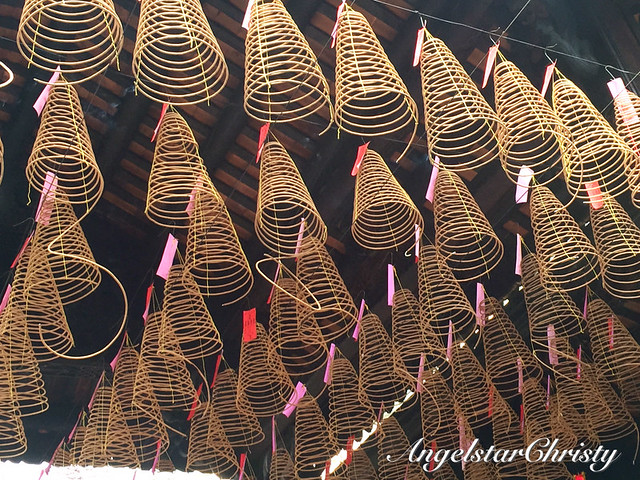
Incense in the form of twirling coils hung from the ceilings, burning and creating that smoke rising in the air.
It is believed that the rising smoke symbolizes that their prayers are being sent and conveyed, or on its way of transmission to the gods/deities in heaven.
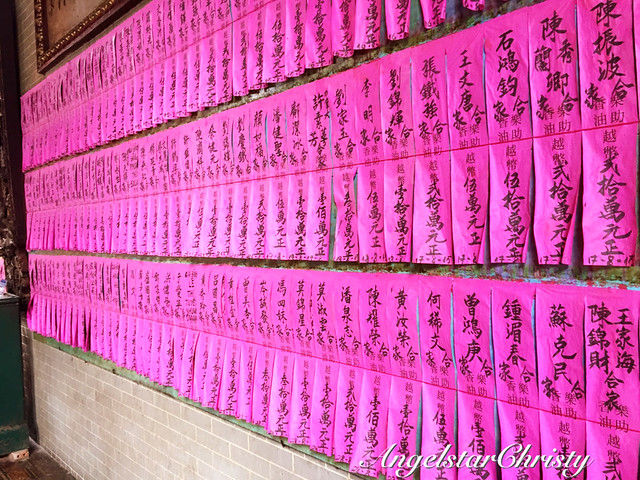
I love to watch scenes of devotion and worship in sacred places, and I have often been careful when it comes to taking photographs in places of worship; mainly because it is all about respect.
These people are here for worship and to pray, and it is not respectful to even stand or obstruct their ways or even take close shots of them.
You wouldn't like it either if you were praying and you had someone shoving their camera lens directly at you.
Furthermore, the religious communities (most religions) have certain rules about photography in their places of worship.
It is important to be mindful when taking photos in these sacred places.
You may be of a different faith and may not believe in their religion; the place may not be sacred to you, but it is sacred to the believers.
Remember that.
I have also learnt that the deities are not to be captured, as told to me by some religious folks.
Again, it is about respect.
Therefore, be really careful when you are taking shots of the gods/deities at the altars, or even the altars in general.
Generally, it is all about the cultural beliefs and traditions observed differently everywhere around the world and it is the existence of these arrays of cultures which makes the world a much colorful place and one of diversity.
It is all about the respective cultures which are around us; as we co-exist on the planet.
These are the scenes of faith and devotion, in the Thien Hau Temple, or the Pagoda of Thien Hau; Chua Ba Thien Hau in Ho Chi Minh City (Saigon)
It is not just of tourism that it is popularized; but rather the strength of local beliefs and in all,
It is a picture of Faith.
Let us not pray to be sheltered from dangers but to be fearless when facing them
- Rabindranath Tagore -
Note:
The terms Temple and Pagoda are often ubiquitous in the Taoism and Buddhism context, and one could find themselves easily confused.
It is not about the architecture that tells the difference, but rather, the beliefs.
In Vietnam, a pagoda is often associated or entirely dedicated to the Buddhism worship.
It is reserved and is exclusive only for the worship of Buddha.
A temple, however, could be a mix of Taoism and Buddhism worship and is more general in its context.

Location of Chua Ba Thien Hau:
Nguyen Trai Street in Cholon, District 5, Ho Chi Minh City
Address:
710 Nguyễn Trãi, phường 11, Quận 5, Hồ Chí Minh, Vietnam
No Admission Fee Required
(For motorcyles, parking rates/fees apply)

*Author's Note:
This is not a sponsored/promotional post, and solely based on author's personal expenses, opinions and preferences and do not represent the general public.
Experiences vary from one individual to another.
You do not have to agree with me.
You do not have to agree with me.
This is based on my personal experience and is told in a subjective manner, entirely from my perspective.
Photos all belong to me and are copyrighted.
LIKE my Facebook Page
Follow Me on Twitter @Angelstar
Follow my Google+
Stalk me on Instagram @AngelstarChristy




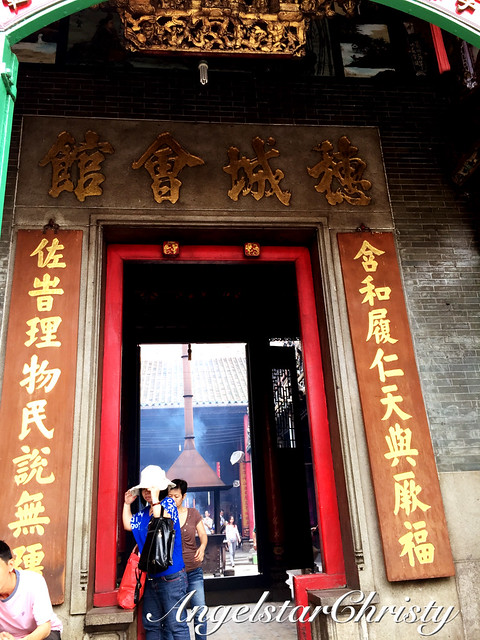

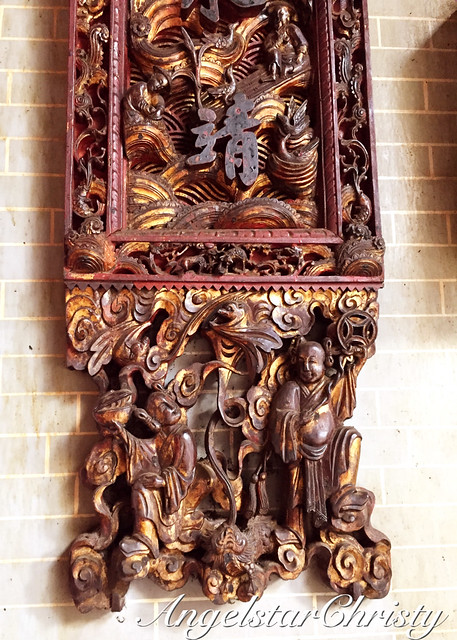
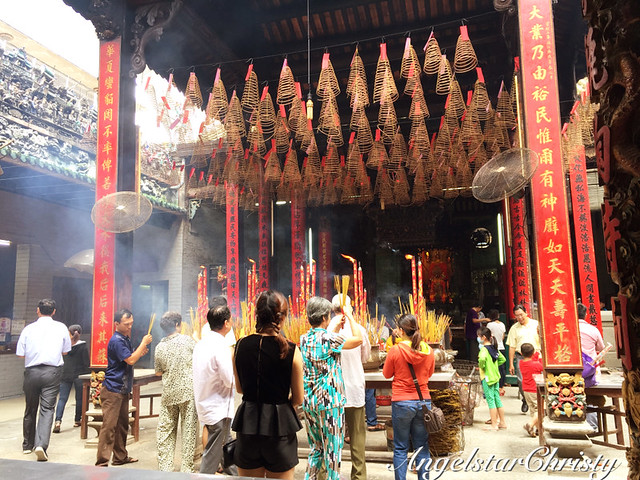
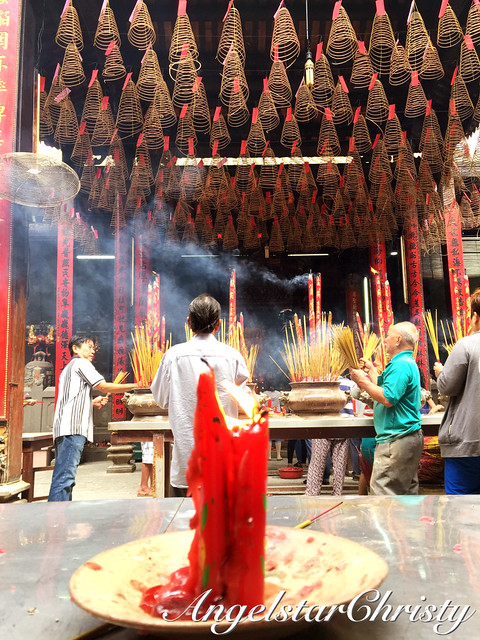



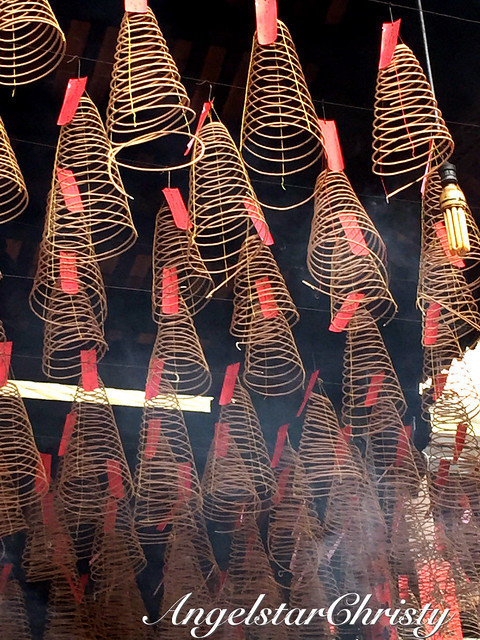
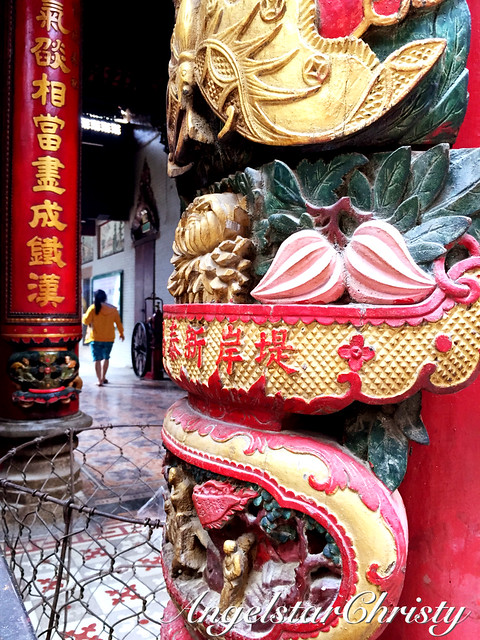

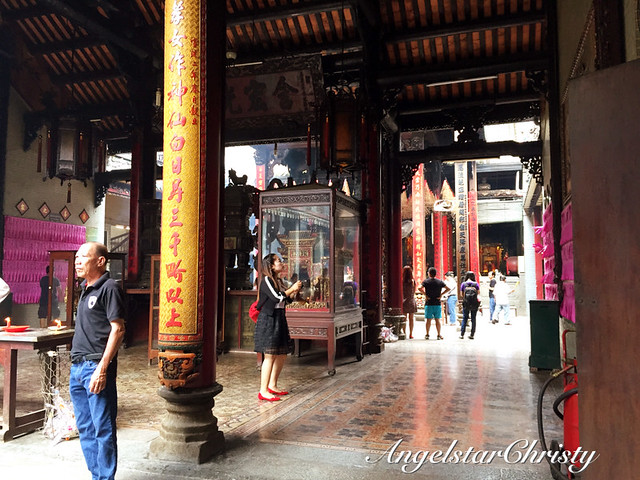
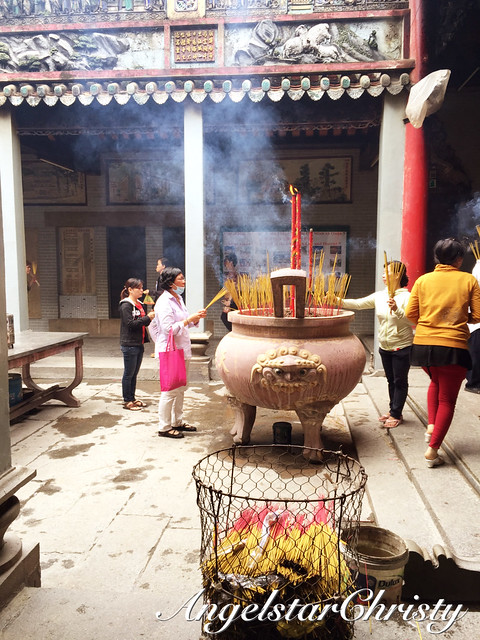
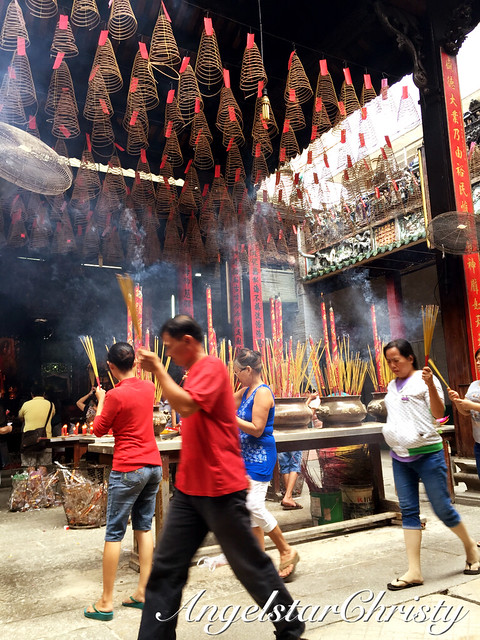


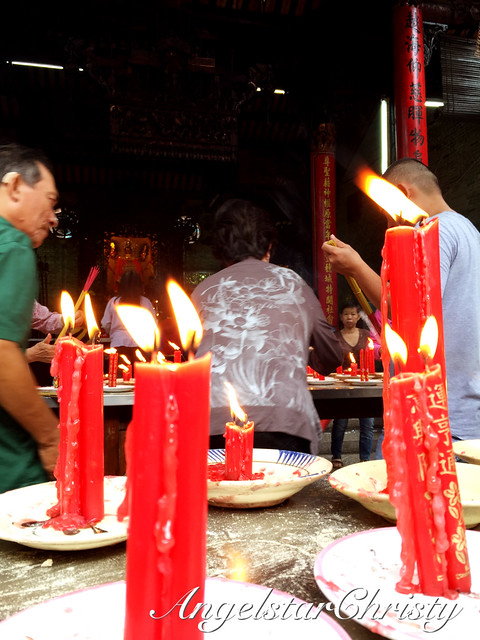


0 comments